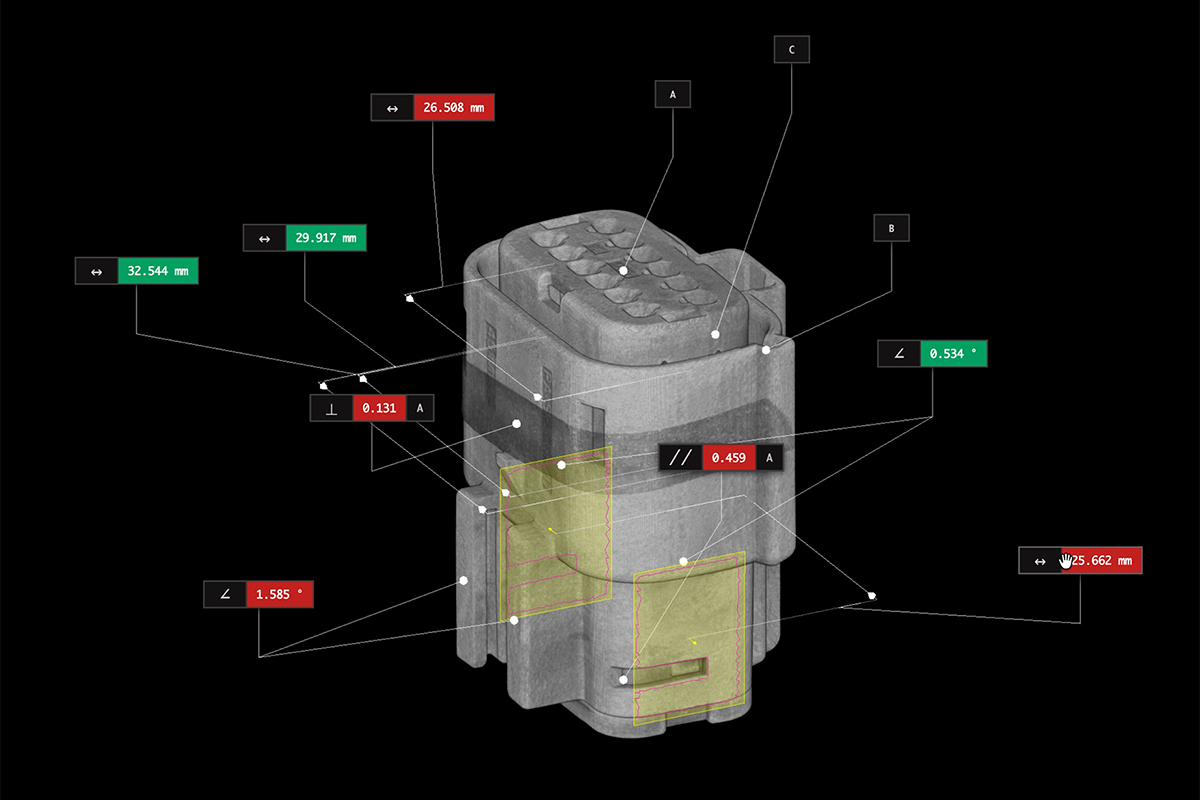Inside the DJI Mavic Pro Drone with CT scans
The DJI Mavic Pro Drone is just the right size to throw into a backpack or tote bag. With its wings folded up, it’s no bigger than your hand, and this portability has made the drone a favorite among enthusiasts. Despite its compact size, the DJI Mavic Pro still packs an impressive amount of refined motor and photographic engineering into its lightweight body. The best way to appreciate and better understand DJI’s design is exploring the drone through the eyes of a CT scanner.
Most people will be drawn to the Mavic for its photo and video capabilities. It’s equipped with four cameras (two front-facing and two rear-facing) that help maintain its stability. The fifth main camera offers 12 megapixel still photo resolution and 4K video recording. A bubble dome protects the camera’s gimbal, and three motors control its movement. Our scan shows that one of them is tucked right behind the lens.

A slice view of two of the four main motors shows how much attention was paid to the rotors. We also get a glimpse of how the folded arms work. They each contain a strong but lightweight truss pattern and a power line to each motor.

The Mavic boasts a redesigned flight battery with a remarkably long life; it can fly for upwards of 25 minutes on a single charge. Any cross section shows that this is only possible because the battery takes up almost half of the total internal space of the drone. If you’re looking to reach speeds of up to 40 mph with the Mavic’s Sport Mode or planning to shoot video all day, you might want to have a few spare batteries on hand—though it does only take about an hour to recharge.

2022 Holiday Gift Guide
We featured the DJI Mavic Pro Drone in our 2022 Holiday Gift Guide. Check out CT scans of the other gifts here!










